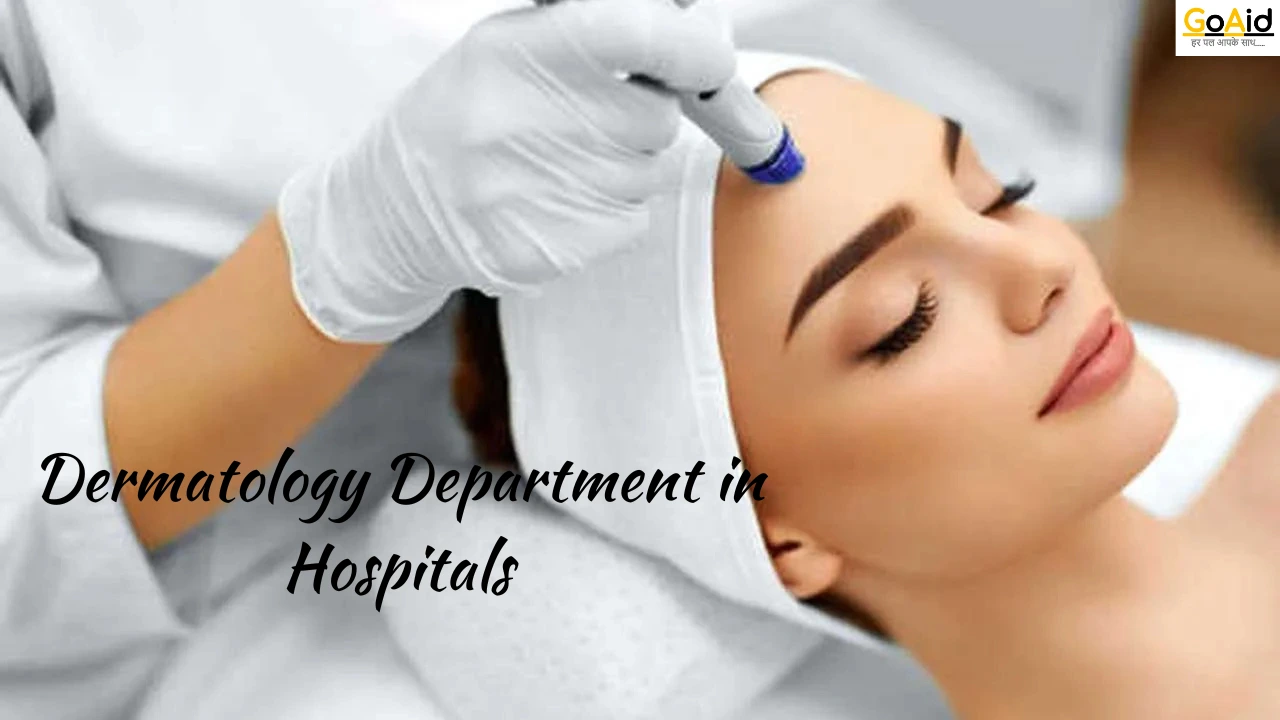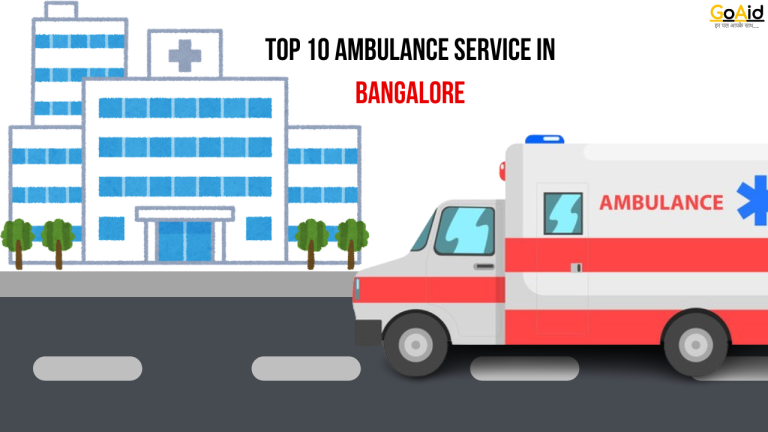Have you ever visited any hospital? Then you must have noticed the dermatology department in the hospital. Even an ordinary hospital consists of a dermatology department in Hospitals. If you have no idea what dermatology means and what is dermatology department in Hospitals is, then no need to worry about it! Because we have simplified this educational journey for you.
In this blog, we have added a comprehensive detail about the Dermatology department in the Hospital. We have provided you with details about what is dermatology department. Its roles and responsibilities, its features and specialties, treatment provided under the dermatology department, essential equipment used in this department & also how can you choose the best dermatology hospitals in India.
So, let’s start-
Complete Guide to the Dermatology Department in Hospital
We have explained every aspect of the Dermatology Department in the Hospital in this blog. After reading this blog, you don’t need to read any other blog to get all the basic to advanced level information about dermatology departments in Hospitals.
What is the Dermatology Department in the Hospital? – What does Dermatology mean?
The Dermatology Department in the hospital is a specialized unit dedicated to diagnosing and treating skin, hair, and nail disorders. This department addresses a range of conditions, from common issues like acne and rashes to complex diseases such as skin cancer.
What does Dermatology mean?
Dermatology itself, by definition, is the branch of medicine focused on the health and treatment of the skin—the body’s largest and most visible organ.
In hospitals, the Department of Dermatology is equipped with essential diagnostic tools and significant tests to provide medical Dermatology services. These include allergy testing, biopsies, and laser treatments to manage conditions effectively. What happens in the Dermatology department extends to preventative care, cosmetic treatments, and education on skin health.
Roles and Responsibilities in Dermatology Department in Hospitals
The Dermatology Department in hospitals plays a vital role in both clinical care and patient education, with specific roles and responsibilities for ensuring comprehensive skin health management.
1. Patient Diagnosis
Dermatologists perform skin assessments, including visual examinations and significant tests like skin biopsies and allergy testing, to accurately diagnose conditions such as eczema, psoriasis, and skin cancers. This ensures targeted treatment for diverse conditions.
2. Treatment Planning
Following diagnosis, dermatologists create individualized treatment plans that may involve topical medications, oral prescriptions, or procedural interventions. The Dermatology department customizes care plans to improve patient outcomes and manage chronic skin diseases.
Also Read: Hospital Department List: Everything You Need to Know
3. Performing Minor Surgeries
Dermatologists in hospitals handle minor surgical procedures, like mole and cyst removal, to address growths or conditions requiring intervention. These surgeries are usually performed in the hospital dermatology room equipped with sterilized instruments.
4. Cosmetic and Aesthetic Procedures
Many departments offer aesthetic services, such as laser therapy, Botox, and fillers, using essential equipment in the dermatology ward. These procedures address scarring, wrinkles, and other concerns, enhancing patient appearance and confidence.
5. Skin Cancer Management
Dermatologists provide comprehensive care for skin cancer, from early detection through screenings to surgical removal of malignant lesions. They work closely with oncologists to manage cases and ensure thorough treatment and monitoring.
6. Patient Education and Preventative Care
Dermatology departments focus on patient education, guiding sun protection, skincare routines, and managing skin disorders. Preventative advice reduces future skin issues, empowering patients to maintain healthier skin.
7. Wound and Burn Care
Dermatologists also treat wounds and burn injuries, especially in cases of severe burns. This role involves dressing wounds, preventing infections, and minimizing scarring, contributing to the overall healing and recovery process.
Read More: The Radiology Department in Hospital
8. Collaboration with Other Departments
Dermatologists often collaborate with other specialties, especially in cases where skin symptoms are indicative of systemic illnesses, such as lupus. This interdepartmental approach supports holistic patient care.
9. Dermatopathology Services
Some dermatologists specialize in dermatopathology, examining skin biopsies under microscopes to diagnose conditions at a cellular level. This enhances diagnostic accuracy, especially for complex skin diseases.
10. Clinical Research and Training
Many hospital dermatology departments participate in clinical research to explore new treatments and improve existing protocols. Additionally, they train resident doctors and dermatology students, contributing to advancements in medical dermatology.
Features and Specialities of the Dermatology Department
These are the key features and specialties of the Dermatology Department commonly found in hospitals, each designed to provide comprehensive care for various skin-related conditions:
1. Advanced Diagnostic Technology
Dermatology departments are equipped with tools like dermatoscopes, Wood’s lamps, and imaging systems to identify skin conditions accurately. These technologies help dermatologists visualize underlying skin issues and assess conditions in greater detail.
2. Cosmetic Dermatology Services
Many dermatology departments offer cosmetic services, including chemical peels, Botox, and fillers. These treatments address aesthetic concerns such as aging, acne scars, and pigmentation, providing patients with a wide range of enhancement options.
Know More: The Orthopedics Department in Hospital
3. Laser Treatment Facilities
Equipped with specialized laser technology, these departments can treat issues such as pigmentation, hair removal, and scar reduction. Laser therapy provides precise and minimally invasive solutions for a variety of skin concerns.
4. Phototherapy Units
Phototherapy, commonly used for conditions like psoriasis and eczema, involves controlled exposure to UV light to reduce skin inflammation. This feature is especially helpful for managing chronic skin diseases with fewer side effects.
5. Surgical Dermatology
Dermatology departments often handle minor surgical procedures, such as mole removal, skin biopsies, and skin cancer excisions. These specialized surgical services are performed in a safe, sterile environment to ensure patient safety and effective treatment.
6. Allergy Testing and Patch Testing
These tests help determine skin sensitivities and allergies, essential for diagnosing conditions like contact dermatitis. This testing capability enables dermatologists to recommend targeted skincare solutions for sensitive patients.
7. Wound Care and Burn Treatment
Specialties in dermatology departments often include care for skin injuries, such as burns or chronic wounds. This involves debridement, specialized dressings, and infection control to support skin healing and prevent scarring.
8. Teledermatology Services
Many departments offer virtual consultations, allowing patients to seek expert advice remotely. Teledermatology improves access to care for those unable to visit in person, making dermatological support more accessible.
9. Pediatric Dermatology
Some dermatology departments have specialists trained in pediatric care, addressing skin conditions in infants and children, such as eczema and birthmarks. Pediatric dermatology ensures that young patients receive tailored, age-appropriate care.
Also Read: The Obstetrics and Gynecology Department in Hospital
10. Clinical Trials and Research
Many hospital dermatology departments conduct clinical research to explore new treatments, such as immunotherapy for skin cancers or biologic medications for psoriasis. This commitment to research helps advance the field of dermatology and offers patients access to innovative therapies.
What treatment is provided in the Dermatology Department?
The Dermatology Department in hospitals offers a wide range of treatments to manage various skin, hair, and nail conditions, combining medical, surgical, and cosmetic dermatology services. Here are some key treatments provided:
1. Topical and Oral Medications
For conditions like acne, eczema, and psoriasis, dermatologists prescribe creams, ointments, or oral medications. Topical steroids, retinoids, and immunosuppressants are common medications that help control inflammation and improve skin health.
2. Phototherapy
Used to treat chronic conditions like psoriasis and vitiligo, phototherapy exposes the skin to controlled ultraviolet (UV) light. This reduces inflammation and slows down skin cell production, offering relief with fewer side effects than oral medications.
3. Laser Therapy
Laser treatments address a variety of issues, including acne scars, pigmentation, and hair removal. Lasers are also used for vascular lesions, providing precise treatment with minimal damage to surrounding skin tissue. This minimally invasive option enhances both skin health and appearance.
4. Cryotherapy
In cryotherapy, liquid nitrogen is applied to freeze and remove abnormal skin cells, such as warts and precancerous lesions. This quick and effective treatment is popular for benign growths and some types of skin cancers.
Read More: Peptic Ulcers: Causes, Symptoms, and Effective Treatments
5. Surgical Excision
Dermatology departments perform minor surgeries to remove moles, cysts, and skin cancers. For melanoma or other complex conditions, dermatologists may collaborate with surgeons to ensure complete removal and prevent recurrence.
6. Chemical Peels
Chemical peels involve applying a chemical solution to the skin to exfoliate and remove damaged outer layers, helping reduce fine lines, acne scars, and uneven pigmentation. They range in intensity and can be customized to suit individual skin types and concerns.
7. Injectable Treatments
For aesthetic concerns, dermatology departments often offer injectables like Botox and fillers. These treatments reduce wrinkles, enhance facial contours, and rejuvenate skin, providing both medical and cosmetic benefits.
8. Patch and Allergy Testing
Patch testing identifies allergies causing contact dermatitis. A small amount of allergens is applied to the skin to observe reactions, helping dermatologists diagnose allergies accurately and create personalized treatment plans.
9. Biologic Therapy
Used for severe cases of psoriasis, eczema, and other immune-mediated conditions, biologic therapy involves injecting or infusing medications that target specific parts of the immune system, providing long-term control with fewer side effects.
10. Microneedling
Microneedling uses tiny needles to create micro-injuries in the skin, stimulating collagen production and improving the appearance of scars, wrinkles, and skin texture. This treatment is minimally invasive and requires minimal downtime.
Essential Equipment used in the Dermatology Department
The Dermatology Department in hospitals relies on specialized equipment to diagnose, treat, and manage a wide array of skin conditions. Here are some essential pieces of equipment used in the Dermatology Department:
Also Read: Top 10 Heart Hospital in Jaipur
1. Dermatoscope
A dermatoscopy is a handheld device that allows dermatologists to examine the skin in detail, especially useful for detecting skin cancers and evaluating moles. It magnifies and illuminates the skin, helping to differentiate between benign and malignant lesions.
2. Wood’s Lamp
The Wood’s lamp emits ultraviolet (UV) light, which helps detect fungal infections, pigmentation disorders, and bacterial infections. Under this light, certain infections fluoresce, allowing dermatologists to make quick and accurate diagnoses.
3. Laser Devices
Dermatology departments use a variety of laser devices for treatments, including hair removal, scar reduction, and pigment correction. Different lasers, like CO2 and Nd, target specific skin issues with precision, offering minimally invasive treatment options.
4. Cryotherapy Unit
Cryotherapy units use liquid nitrogen to freeze and destroy abnormal skin tissue, commonly used for warts, actinic keratosis, and certain skin cancers. This equipment is essential for safe, targeted tissue removal in the Dermatology Department.
5. Phototherapy Unit
Phototherapy units use controlled UV light for treating chronic skin conditions, such as psoriasis, eczema, and vitiligo. These units allow dermatologists to expose specific skin areas to UVB or UVA light, which helps reduce inflammation and manage symptoms effectively.
Read More: Choose Best Ambulance Services From Delhi to outstations
6. Microneedling Pen
Microneedling devices create controlled micro-injuries on the skin, stimulating collagen production and enhancing skin texture. This equipment is widely used for treating acne scars, wrinkles, and pigmentation issues, offering a minimally invasive solution with fast recovery times.
7. Electrosurgery Unit
This equipment uses high-frequency electric currents to remove warts, skin tags, and other small growths. Electrosurgery units allow for precise, controlled removal with minimal bleeding, making it ideal for delicate skin procedures.
8. High-Resolution Cameras and Imaging Systems
High-resolution cameras and imaging systems capture detailed images of the skin, used for documenting skin changes over time, diagnosing, and planning treatments. Advanced imaging can even analyze pigmentation and vascular structures beneath the skin’s surface.
9. Patch Testing Kits
Essential for allergy testing, patch testing kits contain a variety of allergens to test for reactions on the skin. Dermatologists use these kits to diagnose contact dermatitis and create targeted treatment plans for sensitive or allergic skin conditions.
10. Biopsy Instruments
Biopsy tools, such as punch biopsy devices, allow dermatologists to take small samples of skin for laboratory analysis, crucial for diagnosing skin cancers, rashes, and inflammatory diseases. These instruments ensure safe and effective tissue sampling.
Know More: Standard Protocols for Paramedics to Follow
How to Choose the Best Dermatology Hospital in India
Choosing the best dermatology hospital in India requires careful consideration of various factors to ensure you receive the highest quality care. Here are some key points to keep in mind:
1. Accreditation and Certification
Look for hospitals that are accredited by recognized bodies such as the National Accreditation Board for Hospitals & Healthcare Providers (NABH) or similar organizations. Accreditation ensures that the hospital meets specific standards of quality and safety.
2. Expertise in Dermatologists
Research the qualifications and experience of the dermatologists in the hospital. Specialists with board certifications and a strong track record in treating a variety of skin conditions are more likely to provide effective care. Consider their subspecialties, such as pediatric dermatology or cosmetic dermatology, depending on your needs.
3. Technology and Equipment
Evaluate the availability of advanced diagnostic and treatment technologies, such as laser therapy, phototherapy, and dermatoscopes. A well-equipped dermatology department can offer a broader range of treatments and improve patient outcomes.
4. Range of Services
Assess the variety of services offered by the dermatology department, including medical, surgical, and cosmetic dermatology. A comprehensive hospital that provides diverse treatments can cater to all your dermatological needs under one roof.
5. Patient Reviews and Testimonials
Read reviews and testimonials from previous patients. Online platforms and social media can provide insights into patient experiences regarding treatment effectiveness, hospital facilities, and the quality of care provided by dermatologists.
Read More: The Essential Role of Emergency Ambulance Services in Public Health
6. Accessibility and Location
Consider the hospital’s location and accessibility. A conveniently located hospital can save time and effort for regular check-ups or treatments. Additionally, check if the hospital offers teledermatology services for remote consultations.
7. Insurance and Payment Options
Verify if the hospital accepts your health insurance plan or offers flexible payment options. Understanding the costs involved, including consultations and treatments, will help you make informed financial decisions.
8. Follow-Up Care
Inquire about the hospital’s follow-up care protocols. A good dermatology department will have a structured follow-up system to monitor your progress and make any necessary adjustments to your treatment plan.
9. Reputation and Experience
Research the hospital’s overall reputation in the community and its experience in handling dermatological cases. Hospitals with a long-standing history of successful treatments and high patient satisfaction ratings are generally more reliable.
10. Consultation Process
The initial consultation can give you a good sense of the hospital’s approach. Observe the level of attention and detail provided during the consultation, as well as how well the dermatologists communicate and address your concerns.
Book Ambulance: GoAid Ambulance Service
Conclusion to the Dermatology Department
In conclusion, the Dermatology Department plays a crucial role in managing and treating various skin, hair, and nail conditions within hospitals. With advanced diagnostic tools, a range of treatment options, and specialized services, dermatologists are equipped to provide comprehensive care tailored to each patient’s needs.
From medical treatments for chronic conditions to cosmetic procedures, the department addresses diverse concerns, ensuring optimal skin health and patient satisfaction. We have provided you with all the essential details about the dermatology department in hospitals. If you have any further questions or require more information, feel free to ask in the comment box below, and we will be happy to assist you!
FAQ
Question 1: What is the Dermatology department in hospitals?
Answer: The Dermatology department in hospitals specializes in diagnosing and treating skin, hair, and nail conditions. This department addresses a wide range of issues such as acne, eczema, psoriasis, skin cancer, and allergic skin reactions. It involves both medical and surgical approaches for skin care.
Question 2: What is the role of the Dermatology department in a hospital?
Answer: The Dermatology department in a hospital plays a crucial role in providing medical dermatology services, which include diagnosing and treating various skin disorders, performing dermatological surgeries, and offering cosmetic treatments like laser therapy and dermal fillers. It ensures patient care for both chronic and acute dermatological conditions.
Question 3: What are the significant tests conducted in the Dermatology department?
Answer: In the Dermatology department, significant tests include skin biopsies, patch testing for allergies, Wood’s lamp examination for fungal infections, dermatoscopy for identifying skin cancer, and blood tests for conditions like psoriasis or eczema. These tests help in accurate diagnosis and tailored treatment.
Question 4: What is medical dermatology?
Answer: Medical dermatology involves the diagnosis and treatment of non-surgical skin conditions, such as acne, rosacea, psoriasis, eczema, and skin infections. It focuses on the use of medications, topical treatments, and light therapies to manage chronic and acute dermatological conditions.
Question 5: What treatments are provided in the Dermatology department of hospitals?
Answer: The Dermatology department provides treatments for various skin issues, such as topical treatments for acne, oral medications for eczema, laser therapies for skin rejuvenation, and surgical procedures like mole removal or skin cancer excision. It also offers cosmetic dermatology for improving skin appearance.
Question 6: What is the meaning of Dermatology?
Answer: Dermatology is the branch of medicine that focuses on the study, diagnosis, and treatment of skin, hair, and nail diseases. It encompasses a wide range of conditions, from cosmetic concerns like acne to serious diseases like melanoma and dermatitis.
Question 7: What happens in the Dermatology department of a hospital?
Answer: In the Dermatology department of a hospital, patients undergo consultations for various skin, hair, and nail issues. The dermatologists conduct physical examinations, recommend tests like biopsies, cultures, and patch testing, and suggest appropriate treatments. Patients may also receive cosmetic procedures, laser treatments, and specialized therapies.
Question 8: What are the essential equipment found in the Dermatology ward of hospitals?
Answer: The Dermatology ward in hospitals is equipped with essential tools like dermatoscopes for skin examination, Wood’s lamps for detecting fungal infections, cryotherapy equipment for wart removal, laser machines for skin resurfacing, and microscopes for evaluating skin cells. These devices help dermatologists diagnose and treat skin diseases effectively.
Question 9: What is the function of the Dermatology department in hospitals?
Answer: The function of the Dermatology department in hospitals is to provide comprehensive care for skin, hair, and nail disorders. This includes diagnosing skin conditions, performing procedures like biopsies or laser therapy, managing chronic skin diseases like psoriasis or eczema, and offering cosmetic dermatology services for aesthetic concerns.
Question 10: What are the importance and roles of the Dermatology department in a hospital?
Answer: The importance of the Dermatology department lies in its role in treating skin-related conditions, which can significantly affect a patient’s quality of life. It helps diagnose and manage both medical conditions like skin cancer, acne, and eczema, as well as offering cosmetic treatments for enhancing appearance, making it a vital department in healthcare.
















